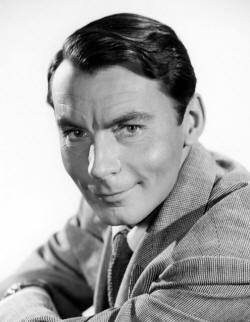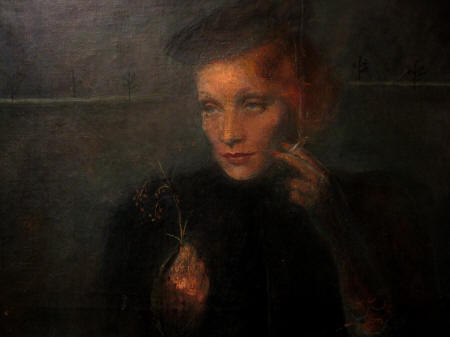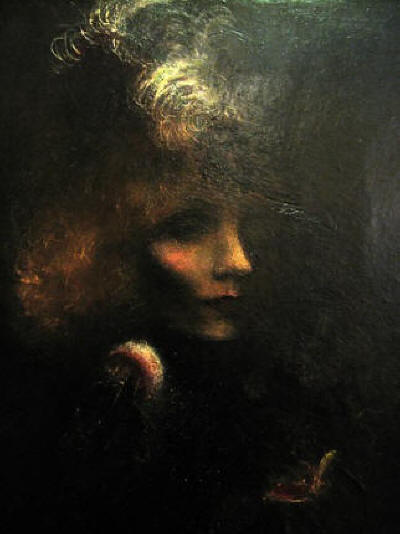

Wife Eleonora von Mendelssohn, Partner Hans Heinrich von Twardowski
Queer Places:
321 Ocean Front Walk, Venice, CA 90291
 Martin Kosleck (born Nicolaie Yoshkin, March 24, 1904 – January 15, 1994) was a German film actor.
The turbulent relationship between
Eleonora von Mendelssohn and husband Martin Kosleck was
chronicled in the book "The Grand Surprise: The Journals of Leo Lerman"
(2007). Leo Lerman, who was a close gay friend
to Eleanora, claims that Kosleck had a male lover at the time of his wife's
mysterious death in 1951. Her death was reported as a suicide although Lerman
claims that after her death a pillow was found over Eleonora's face and a bath
mat had been soaked in ether.
Martin Kosleck (born Nicolaie Yoshkin, March 24, 1904 – January 15, 1994) was a German film actor.
The turbulent relationship between
Eleonora von Mendelssohn and husband Martin Kosleck was
chronicled in the book "The Grand Surprise: The Journals of Leo Lerman"
(2007). Leo Lerman, who was a close gay friend
to Eleanora, claims that Kosleck had a male lover at the time of his wife's
mysterious death in 1951. Her death was reported as a suicide although Lerman
claims that after her death a pillow was found over Eleonora's face and a bath
mat had been soaked in ether.
Like many other German actors,[2] Kosleck fled when the Nazis came to power. Inspired by his deep hatred of Adolf Hitler and the Nazis, Kosleck made a career in Hollywood playing villainous Nazis in films. While in the United States, he appeared in more than 80 films and television shows in a 46-year span. His icy demeanor and piercing stare on screen made him a popular choice to play Nazi villains. He portrayed Joseph Goebbels, Adolf Hitler's propaganda minister, five times, and also appeared as an SS trooper and a concentration camp officer.[3]
Kosleck was born in Barkotzen in Pomerania, Germany, the son of a forester. His family was "German-Russian".[4] He became interested in acting at an early age. He spent six years in the Max Reinhardt Dramatic School, particularly excelling in Shakespearian roles, and working in revues and musicals in Berlin. At the age of 23, he appeared in his first film, a silent movie directed by Johannes Brandt called Der Fahnenträger von Sedan. Two years later, he appeared in Lupu Pick's Napoleon at Saint Helena. Kosleck appeared in two more films in Germany in 1930, the science-fiction thriller Alraune (his first sound film) and The Singing City.

Marlene Dietrich by Martin Kosleck

Marlene Dietrich by Martin Kosleck, Gay Museum Berlin, Oil painting, shown as part of an exhibition about Hans Heinrich von Twardowski, painted by his partner, Martin Kosleck.
In the early 1930s, Hitler and the Nazi Party were growing in power. Kosleck spoke out against both and decided to leave Germany in 1931 for Britain. The following year, he arrived in New York City and then traveled west to Hollywood. In 1933, when Hitler and the Nazi Party came to power, because of his opposition to the Nazis, Kosleck was placed on the Gestapo list of "undesirables". He appeared in his first American film Fashions of 1934 starring Bette Davis. However, he found little work in Hollywood, so he returned to New York and the stage. While Kosleck was acting in The Merchant of Venice on Broadway, Anatole Litvak invited him to Hollywood for a role in a Warner Bros. film. The highly controversial Confessions of a Nazi Spy, starring Edward G. Robinson, Francis Lederer, Paul Lukas, and George Sanders, was based on The Nazi Spy Conspiracy in America, a book by Leon Turron, an FBI agent who had uncovered the network of Nazi organizations throughout the United States. Kosleck, in a small role playing Nazi Propaganda Minister Joseph Goebbels, revealed a sinister streak of evil that was sought after in wartime movies to come. Many other German actors at the time resented being typecast as Nazis; Kosleck, though, reveled in it as a way to get back at the Nazis. He appeared in numerous anti-Nazi films of the early 1940s: Nurse Edith Cavell, Espionage Agent, Underground, Berlin Correspondent, Bomber's Moon, and Chetniks! The Fighting Guerrillas. However, it was his impression of Goebbels that will remain in the memories of moviegoers, especially in Paramount's 1944 pseudo-documentary The Hitler Gang. With the end of the Second World War, roles as Nazis declined. Kosleck then moved into horror B movies, such as The Frozen Ghost and The Mummy's Curse (both starring Lon Chaney Jr., whom Kosleck disliked intensely), House of Horrors, and She-Wolf of London, starring June Lockhart. The House of Horrors gave him his best-remembered role beyond Goebbels, as an insane sculptor, Marcel De Lange, who saves a monster from drowning and gets revenge by having the monster kill his critics.
With fewer film opportunities presenting themselves, Kosleck returned to New York City with his wife, the German-born actress Eleonore von Mendelssohn, a great x3 grand daughter of Moses Mendelssohn. Kosleck appeared on Broadway in The Madwoman of Chaillot in the late 1940s and early 1950s. He also appeared on television in episodes of numerous shows. In 1951, he appeared in the "I Lift Up My Lamp" episode of Hallmark Hall of Fame, a television anthology of plays and books, and episodes of The Motorola Television Hour, where he played Goebbels again, Studio One, Thriller, The Rifleman, Voyage to the Bottom of the Sea, The Outer Limits, Get Smart, Batman (playing Professor Avery Evans Charm), The Man from U.N.C.L.E., The F.B.I., The Wild Wild West, Mission: Impossible, It Takes a Thief, and Sanford and Son. In 1970, Kosleck played (Gestapo) General Mueller in the television comedy Hogan's Heroes, episode: "The Gestapo Takeover". He suffered from a heart attack in the 1970s, and thereafter worked only occasionally, mostly in television. During this time, he appeared in Love, American Style; Banacek; and Sanford and Son. In 1980, he appeared in his last film, The Man with Bogart's Face. Aside from acting, Kosleck was an accomplished painter who supported himself through his work as a portrait artist while waiting for a movie role. An impressionist-style portrait-painter, he painted both Bette Davis and Marlene Dietrich.
Kosleck was in a relationship with fellow actor and German emigrant Hans Heinrich von Twardowski from the early 1930s until Twardowski's death in 1958. Their sometimes turbulent relationship is discussed in many letters between Twardowski and his close friend Marlene Dietrich. In 1947, Kosleck married in an unexpected act the German actress Eleonora von Mendelssohn (her only film is Black Hand, 1950), who committed suicide in 1951.[5] Kosleck died at age 89, following abdominal surgery, in a Santa Monica convalescent home.
My published books: